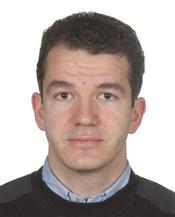Program Information
Dose Accumulation and Evaluation in Lung SBRT Among All Phases of Respiration
JD Azcona1*, J Burguete2 , B Barbes1 , J Aristu1 , M Moreno1 , A Zubiria1 , P Arce3 , JI Lagares3 , (1) Clinica Universidad de Navarra, Pamplona, (3) Universidad de Navarra, Pamplona, Navarra, (7) Centro de Investigaciones Energeticas, Medioambientales, y Tecnologicas, Madrid
Presentations
SU-F-J-99 (Sunday, July 31, 2016) 3:00 PM - 6:00 PM Room: Exhibit Hall
Purpose: To calculate the total planning dose on lung tumors (GTV) by accumulating the dose received in all respiration phases.
Methods: A patient 4D planning CT (phase-binned, from a Siemens Somatom CT) was used to locate the GTV of a lung tumor in all respiratory phases with Pinnacle (v9.10). GTV contours defined in all phases were projected to the reference phase, where the ITV was defined. Centroids were calculated for all the GTV projections. No deformation or rotation was taken into account. The only GTV contour as defined in the reference phase was voxelized to track each voxel individually. We accumulated the absorbed dose in different phases on each voxel. A 3DCRT and a VMAT plan were designed on the reference phase fulfilling the ITV dosimetric requirements, using the 10MV FFF photon model from an Elekta Versa linac. ITV-to-PTV margins were set to 5mm. In-house developed MATLAB code was used for tumor voxeling and dose accumulation, assuming that the dose distribution planned in the reference phase behaved as a “dose-cloud” during patient breathing.
Results: We tested the method on a patient 4DCT set of images exhibiting limited tumor motion (<5mm). For the 3DCRT plan, D95 was calculated for the GTV with motion and for the ITV, showing an agreement of 0.04%. For the VMAT plan, we calculated the D95 for every phase as if the GTV in that phase had received the whole treatment. Differences in D95 for all phases are within 1%, and estimate the potential interplay effect during delivery.
Conclusion: A method for dose accumulation and assessment was developed that can compare GTV motion with ITV dosage, and estimate the potential interplay effect for VMAT plans. Work in progress includes the incorporation of deformable image registration and 4D CBCT dose calculation for dose reconstruction and assessment during treatment.
Contact Email:

